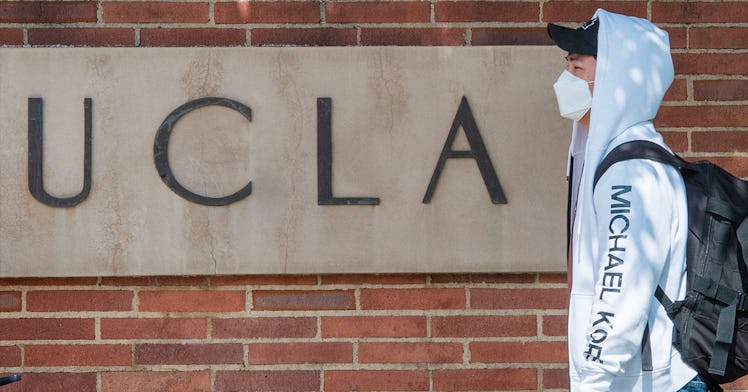Reopened College Campuses Are COVID-19 Hotspots, But Don’t Blame the Students
The same administrators shaming their students refuse to take responsibility for wildly unrealistic reopening plans.

Colleges and universities across the country have reopened their campuses for the fall semester, but the pandemic that forced them to close in the spring hasn’t gone away. Premature reopenings have led, predictably, to spikes in positive COVID-19 tests despite new policies and procedures.
A New York Times analysis found that beginning in August, counties where college students comprise more than ten percent of the population went from a downward trajectory to a pronounced uptick in COVID-19 cases per capita even as other counties continued to see dwindling numbers. Schools from upstate New York to North Carolina to Iowa have experienced spikes dramatic enough to close physical campuses days or weeks after reopening.
Unfortunately but just as predictably, the college leaders who made the decision to reopen and approved plans they assured would keep students, faculty, and staff safe have largely passed the blame for these outbreaks onto students. It has manifested in the form of suspensions, explosions, and, incredibly, public shaming of students judged to have acted unsafely.
For instance, a Tulane dean called students gathering on the Fourth of July “indefensible and truly shameful.” A Syracuse vice-chancellor wrote that students “could force a situation where some of their classmates may have to vacate the most safe and stable and supportive living situation they have ever known.” Northeastern expelled 11 freshmen for congregating in a hotel room—but it kept their tuition.
But according to public health experts, administrators are the true failures here.
“It’s the adults’ responsibility” to drive down transmission within the community, so do not blame students for your inability to do what you need to do — which is drive down cases,” Dr. Ali Khan, dean of the School of Medicine at the University of Alabama at Birmingham, told NBC.
“A lot of school administrators are blaming their students for the failure of their own public health plan, which I think is unconscionable,” Julia Marcus, an infectious disease epidemiologist at Harvard Medical School, said.
The politicians allowing bars to reopen, vague CDC recommendations that gave college presidents cover to reopen, and inadequate testing capacity at many schools are all meaningful factors. It’s not, as these administrators would have you think, a bunch of dumb, selfish kids.
The bottom line is that any situation in which young people with still-developing frontal lobes are being asked to live in isolation indefinitely in an environment that’s designed for social interaction is doomed to fail.
Instead of scolding these young people, school administrators would do well to revisit their own plans and build in opportunities for appropriately distanced social activities for their students. The failure of their policies so far is somewhat analogous to the failure of abstinence-only sex education. In both cases, moralizing all-or-nothing approaches have failed where harm reduction approaches succeed.
“If universities really want students to stop having indoor parties, they need to provide opportunities for students to stay socially connected that are lower-risk,” Marcus said.